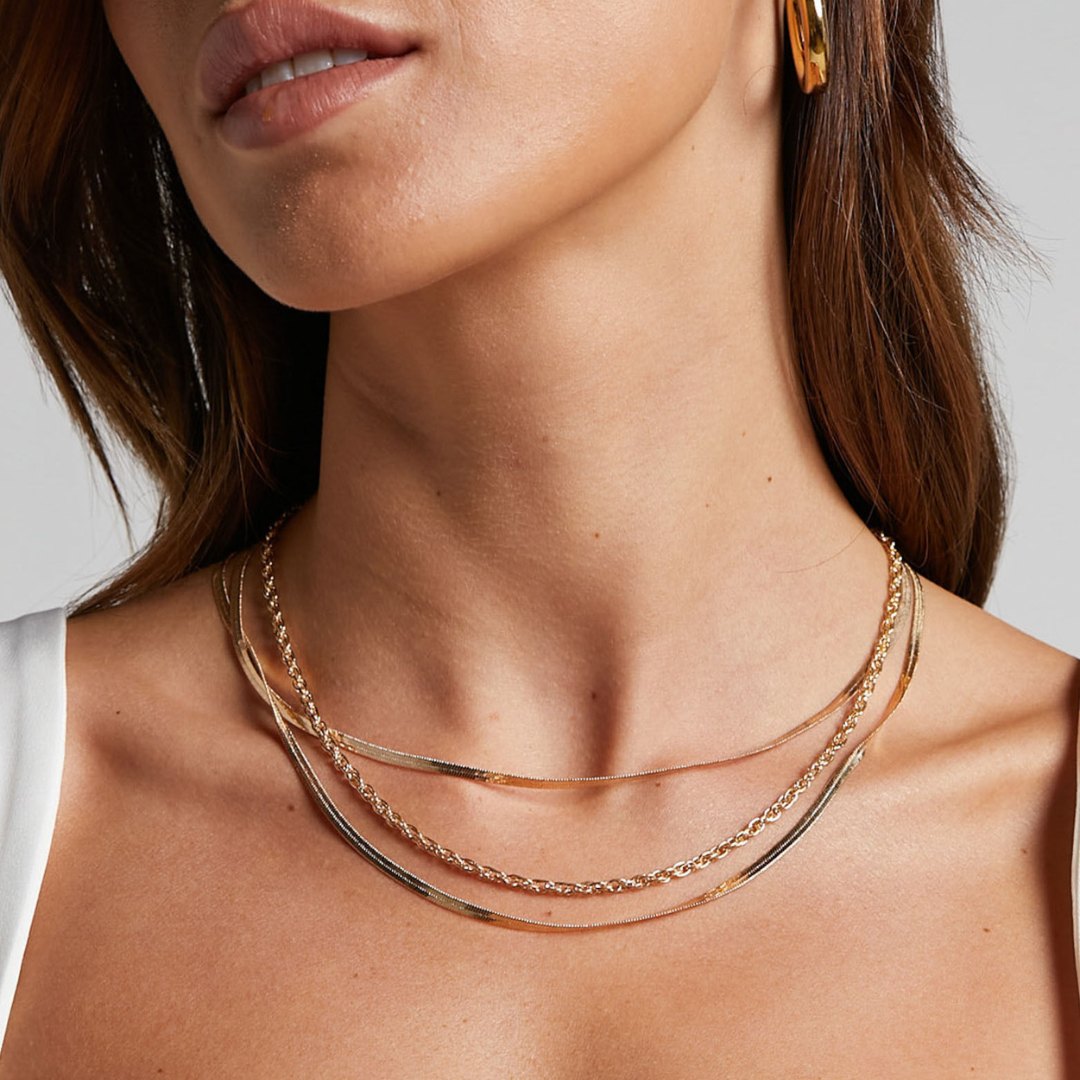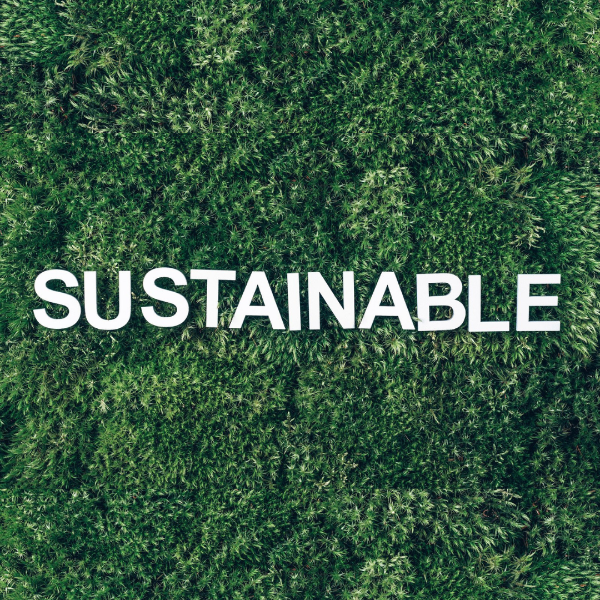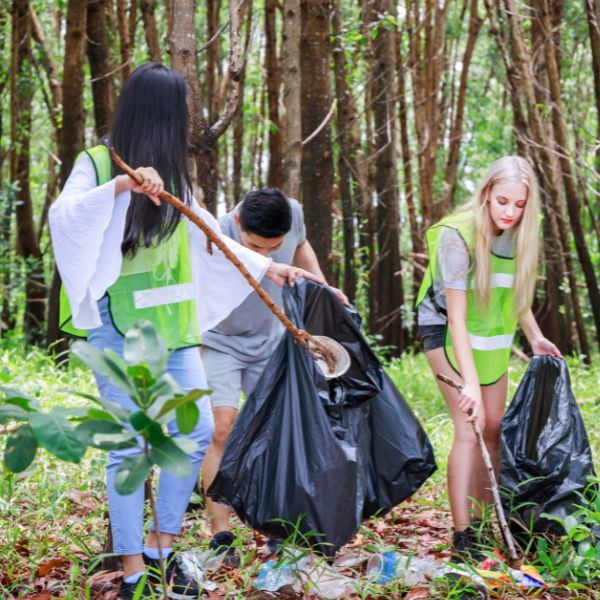2028 SUSTAINABILITY GOALS
At KYERLYN, we are dedicated to setting a new standard for sustainability in the jewelry industry. By 2028, we aim to achieve a series of ambitious goals that reflect our deep commitment to environmental stewardship and social responsibility. Our focus is on creating lasting positive impacts through innovative practices and transformative initiatives. We envision a future where our operations not only minimize harm but actively contribute to the well-being of our planet and its people. With this vision in mind, we are excited to embark on this journey, continually pushing the boundaries of what is possible in sustainability. By pursuing these goals, we strive to lead by example, inspire change, and ensure that our legacy is one of responsible and ethical excellence in every facet of our business.
PEOPLE
We believe that a strong commitment to community is essential for creating a positive and lasting impact. As we set our sights on 2028, our focus is on fostering local economic growth, ensuring fair labor practices, and enhancing social responsibility. By investing in job creation, supporting diverse workforce initiatives, and engaging in meaningful community projects, we aim to strengthen our ties with the communities we serve. Our goal is to build a more inclusive and resilient society, where our efforts contribute to both local prosperity and broader social well-being.
Objective: Foster local economic growth and create job opportunities within the communities we operate in.
- Local Partnerships: Form strategic partnerships with local artisans, small businesses, and community organizations to stimulate economic activity and support local entrepreneurship.
- Job Creation: Aim to create 500 new jobs within local communities by expanding our operations and investing in community-driven projects. This includes direct employment opportunities and supporting local suppliers and service providers.
- Skills Training: Implement training programs and workshops to develop skills in local communities, enhancing employability and fostering long-term economic stability.
- Community Investment: Invest a percentage of our profits into community development projects, focusing on areas such as education, infrastructure, and healthcare to improve overall quality of life.
Objective: Ensure that our operations and supply chain uphold the highest standards of social responsibility and fair labor practices.
- Fair Labor Standards: Enforce strict fair labor practices across our supply chain, including ensuring safe working conditions, fair wages, and respect for workers' rights. All suppliers must adhere to international labor standards.
- Diversity and Inclusion: Increase the representation of underrepresented groups within our workforce to 30%, with a focus on gender equality and inclusion of individuals from diverse backgrounds.
- Supplier Audits: Conduct regular audits of our suppliers to ensure compliance with our social responsibility standards. Address any issues promptly and transparently to maintain high ethical standards.
- Community Engagement: Engage with local communities through dialogue and feedback mechanisms to address their concerns and ensure that our practices align with their needs and values.
Objective: Enhance environmental sustainability and raise awareness about environmental issues within the communities we serve.
- Environmental Education: Launch educational programs and workshops in local schools and communities to promote environmental awareness and sustainable practices. Partner with local educational institutions to integrate these programs into their curricula.
- Community Clean-Up Projects: Organize and support local environmental clean-up initiatives, such as park and beach clean-ups, to contribute directly to improving local environmental conditions.
- Sustainable Development Grants: Provide grants and funding for local sustainability projects and initiatives that align with our environmental goals. This includes supporting community-led renewable energy projects, recycling programs, and conservation efforts.
- Public Awareness Campaigns: Run campaigns to increase public understanding of environmental issues and encourage sustainable lifestyle choices among community members.
PLANET
We are deeply committed to protecting the environment. By 2028, we aim to tackle climate change and reduce our environmental impact through targeted actions in carbon footprint reduction, waste management, and conservation. Our goal is to lead by example with innovative practices and make a meaningful difference for a sustainable future. Together, we are dedicated to creating a healthier planet for generations to come.
Objective: Minimize our carbon footprint across all operations to combat climate change.
- Energy Efficiency Upgrades: Implement advanced energy-efficient technologies in our production facilities, such as LED lighting, high-efficiency HVAC systems, and smart energy management systems, aiming to reduce energy consumption by 50% by 2028.
- Renewable Energy Integration: Transition to 100% renewable energy sources for our manufacturing operations. This includes installing solar panels, purchasing green energy, and exploring other renewable energy solutions.
- Carbon Offsetting: Invest in carbon offset projects that capture or reduce greenhouse gases, such as reforestation initiatives or renewable energy projects, to achieve carbon neutrality in our operations.
- Sustainable Transportation: Optimize our logistics and transportation networks to reduce carbon emissions. Implement low-carbon technologies and choose transportation partners committed to sustainable practices.
Objective: Achieve zero waste in our production processes and promote recycling across our operations.
- Zero-Waste Manufacturing: Develop and implement comprehensive waste management systems that ensure all production waste is either reused or recycled. Aim to achieve zero waste status in all manufacturing facilities by 2028.
- Closed-Loop Systems: Introduce closed-loop recycling systems where materials are continuously recycled and reused within our operations, minimizing the need for new raw materials and reducing waste.
- Packaging Waste Reduction: Use 100% biodegradable or recyclable packaging materials for all products. Work with suppliers and partners to ensure that packaging waste is minimized and properly managed.
- Waste Audits and Reporting: Conduct regular waste audits to track and analyze waste generation and management. Publish annual reports on waste reduction progress to maintain transparency and drive continuous improvement.
Objective: Enhance our environmental impact through proactive conservation efforts and responsible practices.
- Sustainable Sourcing: Ensure all raw materials, including gold and diamonds, are sourced from suppliers who meet strict environmental and ethical standards. Focus on using 100% recycled gold and lab-grown diamonds to reduce environmental degradation.
- Water Conservation: Implement water-saving measures in our production processes, such as advanced water recycling systems and low-water-use technologies, to significantly reduce water consumption and minimize environmental impact.
- Biodiversity Protection: Support and fund biodiversity conservation projects that protect natural habitats and endangered species. Partner with environmental organizations to contribute to conservation efforts and mitigate the impact of our operations on local ecosystems.
- Eco-Friendly Product Design: Innovate and design products with sustainability in mind, using environmentally friendly materials and processes. Promote circular economy principles by creating products that are durable, repairable, and recyclable.
PRODUCT
We are dedicated to redefining sustainability through every aspect of our product lifecycle. As we look towards 2028, our goal is to integrate sustainable practices into the core of our product development, from material sourcing to end-of-life management. We are committed to using responsibly sourced materials, designing products with longevity in mind, and implementing environmentally friendly manufacturing processes. Our focus on sustainable packaging and product end-of-life management further underscores our dedication to minimizing our environmental footprint. By adopting these comprehensive strategies, we aim to lead the jewelry industry in sustainability and create products that reflect our commitment to protecting the planet for future generations.
Objective: Ensure all raw materials are responsibly sourced to support sustainability.
- 100% Recycled Gold: Transition to using only 100% recycled gold in all products to eliminate the need for newly mined gold and reduce environmental degradation.
- Lab-Grown Diamonds: Use exclusively lab-grown diamonds, maintaining a climate-neutral production process and avoiding the environmental impact of traditional diamond mining.
- Certified Suppliers: Partner with suppliers who are certified by international sustainability standards (e.g., Fair Trade, Global Recycled Standard) to ensure ethical and environmentally friendly sourcing practices.
- Transparency and Traceability: Implement a transparent supply chain that provides full traceability of all materials from source to final product, ensuring responsible practices throughout the supply chain.
- Conflict-Free Certification: Ensure all materials, especially diamonds, are certified as conflict-free to avoid contributing to human rights abuses and conflicts.
Objective: Design products that are sustainable, durable, and have minimal environmental impact.
- Eco-Friendly Materials: Use environmentally friendly materials such as recycled metals and sustainable packaging to minimize the environmental footprint of our products.
- Durability and Longevity: Focus on creating high-quality, durable products that last longer, reducing the need for frequent replacements and minimizing waste.
- Modular Design: Incorporate modular design principles that allow for easy repair and upgrades, extending the lifespan of our products.
- Minimalist Design: Embrace minimalist design approaches to reduce material usage and waste while maintaining aesthetic appeal and functionality.
- Circular Economy: Design products with end-of-life recycling in mind, ensuring they can be easily disassembled and recycled or repurposed.
Objective: Implement sustainable and efficient manufacturing processes to reduce environmental impact.
- Energy Efficiency: Upgrade manufacturing facilities with energy-efficient equipment and practices, aiming to reduce energy consumption and greenhouse gas emissions by 50% by 2028.
- Water Management: Implement water-saving technologies and recycling systems to minimize water usage and ensure responsible management of water resources.
- Waste Reduction: Adopt a zero-waste approach in production, where all waste is either recycled or repurposed, achieving zero waste status in all facilities.
- Cleaner Production: Use non-toxic, eco-friendly materials and chemicals in the manufacturing process to minimize environmental pollution and health risks.
- Lean Manufacturing: Apply lean manufacturing principles to streamline processes, reduce resource consumption, and enhance overall efficiency.
Objective: Develop and use sustainable packaging solutions to minimize environmental impact.
- Biodegradable Materials: Use 100% biodegradable or recyclable packaging materials for all products to reduce waste and environmental impact.
- Minimalist Packaging: Design packaging that is functional yet minimal, reducing excess materials and packaging waste.
- Recycled Content: Ensure packaging materials are made from recycled content to support circular economy practices and reduce the need for virgin materials.
- Efficient Packaging Design: Optimize packaging design to reduce size and weight, minimizing transportation emissions and resource use.
- Consumer Education: Include information on packaging about recycling and disposal to encourage proper waste management by consumers.
Objective: Establish practices for responsible product disposal and recycling.
- Take-Back Programs: Implement product take-back and recycling programs that allow customers to return end-of-life products for responsible disposal or recycling.
- Recycling Partnerships: Partner with recycling organizations to ensure that end-of-life products are processed in an environmentally friendly manner.
- Repair Services: Offer repair services for products to extend their lifespan and reduce the need for new purchases.
- Product Refurbishment: Develop programs to refurbish and resell used products, promoting reuse and reducing waste.
- Circular Design: Design products with end-of-life considerations in mind, making them easier to disassemble and recycle, and ensuring components can be repurposed or recycled.
Sustainable Luxury Lasting Impact
Our commitment to sustainability extends beyond our products to encompass our entire approach to community and environmental stewardship. As we work towards our 2028 goals, we are dedicated to integrating responsible practices in every facet of our operations—from using recycled materials and eco-friendly designs to fostering local economic growth and implementing rigorous carbon reduction strategies. Our comprehensive efforts reflect our belief that true sustainability involves not only minimizing our environmental impact but also enhancing the well-being of the communities we serve. By pursuing these ambitious goals, we strive to lead by example, inspire positive change, and ensure that our legacy is one of ethical excellence and enduring responsibility. Together, we are building a future where our business practices harmoniously align with our commitment to people and the planet.







